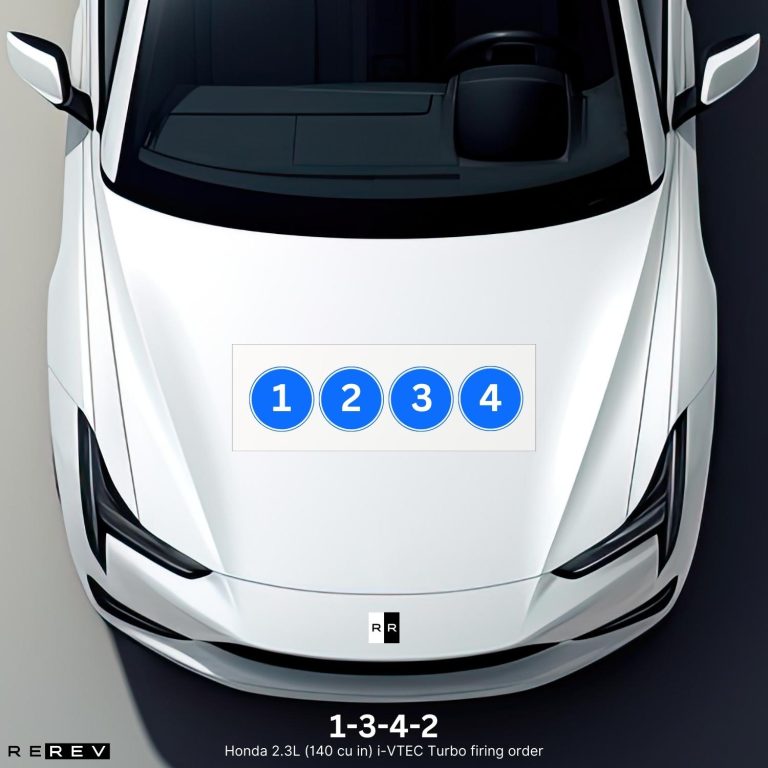Honda 2.3L (140 cu in) i-VTEC Turbo firing order — diagram & guide
Dive deep into the specifics of the Honda 2.3L i-VTEC Turbo firing order.

In 2007, Honda did something pretty exciting by taking the old-school 2.4-liter VTEC engine reducing its capacity a bit, and complementing it with a turbocharger. The result was the short-lived but pretty powerful 2.3-liter i-VTEC engine, and it had a lot of maintenance tasks needing to be done by drivers.
So, we wanted to give you a guide on the Honda 2.3L (140 cu in) i-VTEC Turbo firing order to make sure you’ll get it right from the start. We’ll also discuss the main engine’s maintenance tasks through the prism of its cylinder configuration, so stay tuned for that as well.
Honda 2.3L i-VTEC Turbo firing order
Before we start, it’s important to state that the 2.3-liter i-VTEC used the same engine block as Honda’s previous 2.4-liter VTEC engine. With this in mind, the Honda 2.3L i-VTEC Turbo firing order is 1-3-4-2, and this firing order is also the same for other VTEC four-cylinder engines.
However, this one was fitted with a turbocharger which affects the power, but luckily doesn’t affect the firing sequence. So, you can maintain the cylinders of this engine just as you would with a regular VTEC – this means replacing spark plugs and coil packs frequently.
To do that, you’ll need to check each cylinder in its exact firing order, but how do you figure out the cylinder numbers? Don’t worry, we’ll dive into that as well.
Honda 2.3L i-VTEC cylinder diagram

Since this engine shares the block and a lot of other components with other four-cylinder VTEC engines, the cylinder layout also matches. The first cylinder is at the front of the engine and the rest goes from there to the fourth cylinder in a straight line.
So, you can see the cylinder numbers 1, 2, 3, and 4 looking from the front of the engine towards the rear end. The first cylinder is a bit closer to the radiator, so you can identify that one first and then move on by checking each cylinder accordingly with the firing order that we mentioned.
Honda 2.3L i-VTEC vehicle applications
Finally, we have yet to discuss the models that this engine was used in to help you apply the right firing order. This time, it’s a bit easier than expected since this engine only ever appeared in one vehicle – the Acura RDX.
It was discontinued after the first generation of the engine and many say that it’s still an unrightfully overlooked Honda i-VTEC powertrain. At least that makes your job a bit easier to apply for the right firing order while servicing it.
Our take
Well, there you have it – we’ve gone through all the bits and pieces regarding the firing order of Honda’s 2.3-liter turbo VTEC engine and now you know what to do to properly maintain it.
We just wanted to advise you again not to mix up the maintenance routines for regular VTEC engines with this one as the turbocharger comes with its own servicing needs.